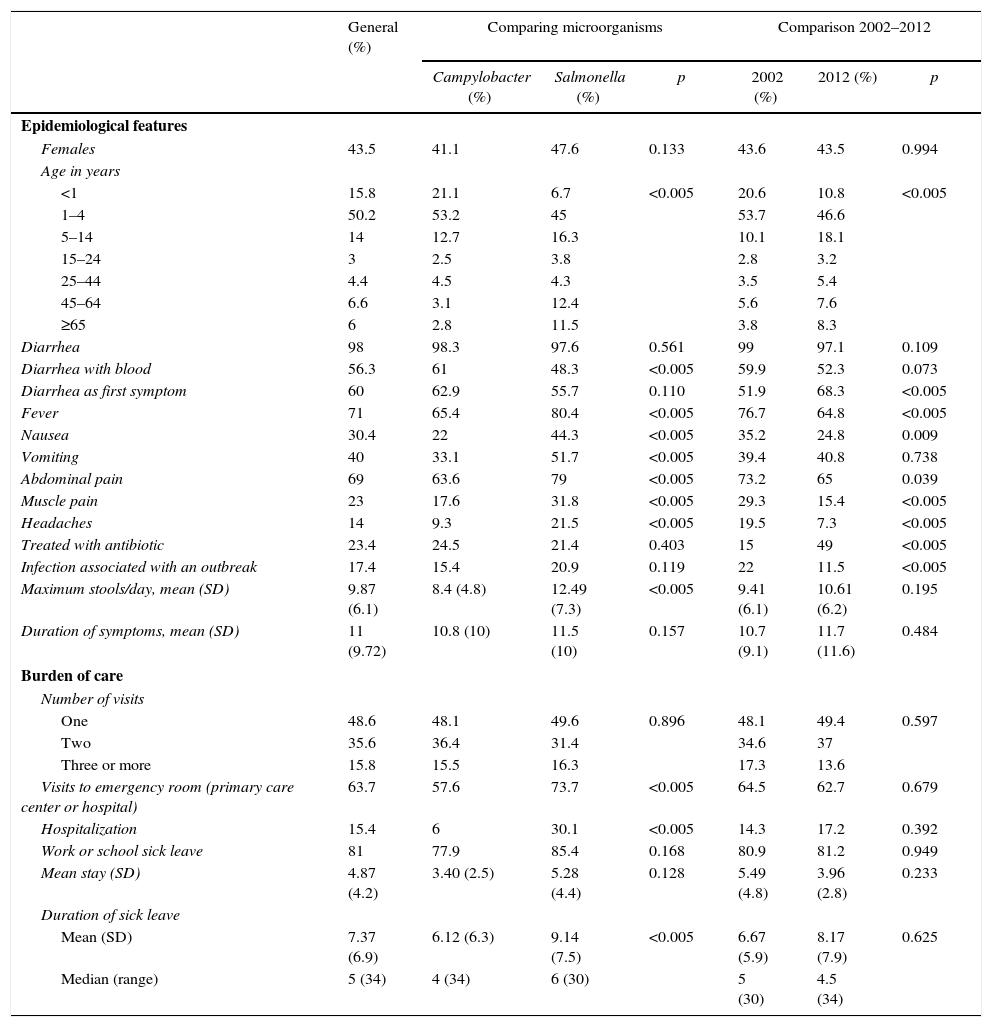In Catalonia the current surveillance systems do not allow to know the true incidence or the health care utilization of acute gastroenteritis (AGE) caused by Campylobacter and Salmonella infections. The aim of this study is to analyze these characteristics.
Patients and methodsDescriptive study of Campylobacter and Salmonella infections reported in 2002 and 2012 in Catalonia, Spain. We included cases isolated and reported by the laboratory to a regional Surveillance Unit.
ResultsThe estimated incidence of Salmonella and Campylobacter AGE decreased by almost 50% and 20% respectively in 2012. Children between one and 4 years old were the most affected in both years. Significant differences in the clinical characteristics and disease duration were observed between Campylobacter and Salmonella. Visits to the Emergency Department and hospitalization rates were 63.7% and 15%, being more frequent among salmonellosis cases.
ConclusionThe estimated incidence of Campylobacter and Salmonella infections has decreased, however rates are still important, as well as it is the health care utilization in both diseases. Current surveillance systems need appropriateness improvements to reach a better control of these infections.
En Cataluña, los sistemas de notificación y vigilancia no permiten conocer la incidencia real ni la carga asistencial de las gastroenteritis agudas (GEA) bacterianas de origen alimentario por Campylobacter y Salmonella, objeto de este estudio.
Pacientes y métodosEstudio descriptivo de los casos de GEA por Campylobacter y Salmonella en los años 2002 y 2012 en una región de Cataluña, España, identificados a partir de cultivos microbiológicos.
ResultadosLa incidencia estimada de GEA por Salmonella se redujo un 50% en 2012, y la de Campylobacter, un 20%. Los niños entre 1-4 años fueron los más afectados en ambos períodos. Se observaron diferencias significativas según el microorganismo en la presentación clínica de algunos síntomas y en la duración de la enfermedad. Acudieron al Servicio de Urgencias el 63,7% de los casos, y un 15% requirieron hospitalización, siendo más frecuente entre los casos de salmonelosis.
ConclusiónLa incidencia de GEA por Campylobacter y Salmonella se ha reducido, pero continúa siendo importante, como lo es la carga asistencial para ambas infecciones. El control de estas dolencias requiere una mayor adecuación de los actuales sistemas de vigilancia epidemiológica.
Artículo
Comprando el artículo el PDF del mismo podrá ser descargado
Precio 19,34 €
Comprar ahora








